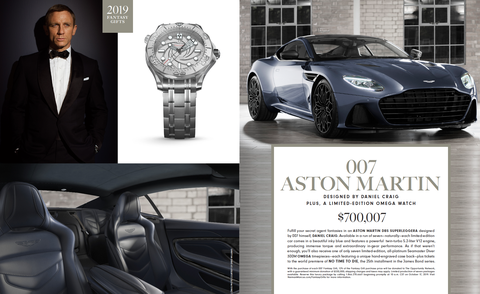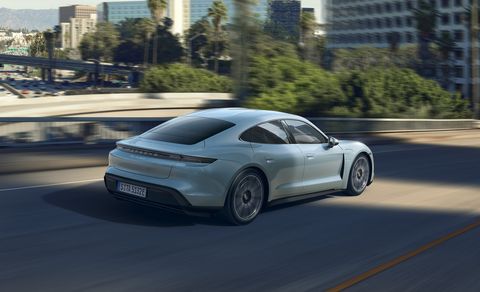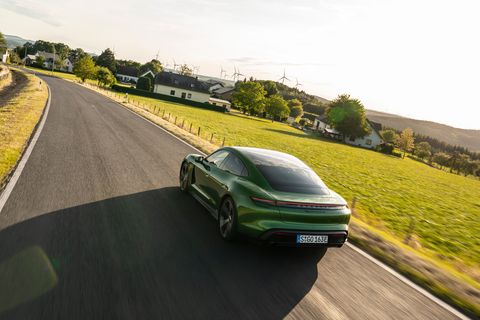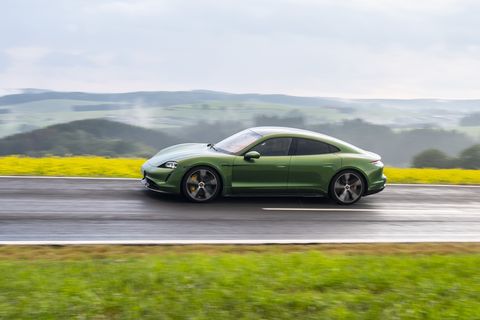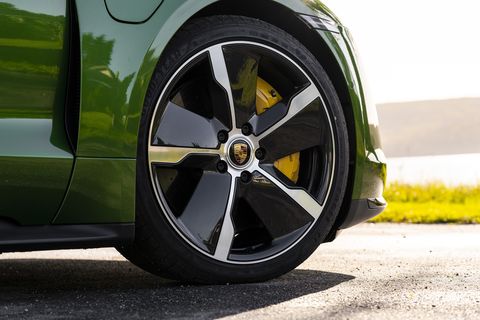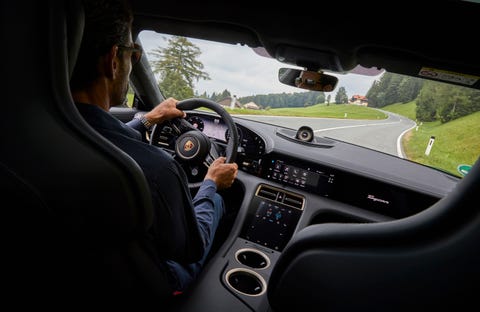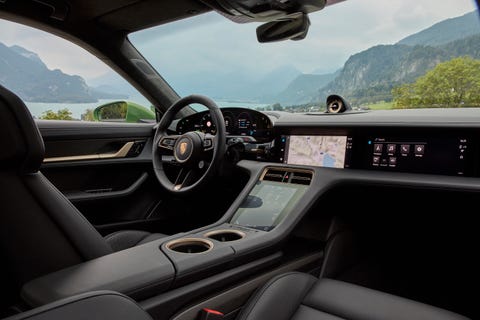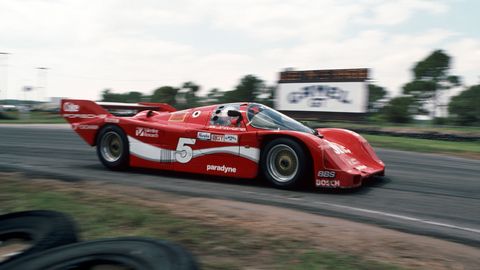Behold: The New Aston Martin Vantage Roadster
As you can see, the major difference to the two-seat, twin-turbo V8 sports car is that there is no longer a roof. Well, technically there actually is one, it’s just made of fabric, and is retractable. In fact, the powered Z-fold mechanism is claimed to be the fastest fabric roof in the game, capable of lowering itself in 6.7 seconds and raising in 6.8 seconds at up to 31mph. Aston claims this is the fastest full operating cycle of any automatic automotive convertible system. To be honest, we didn’t know anyone was keeping tabs, but you’ll be thankful they are when it starts chucking it down mid-August.
Because of a shallow design, this new retractable roof still leaves plenty of room in the back for whatever you want to throw back there. 200 litres of the stuff. Which, we’re told, is enough to stow a full-sized golf bag and accessories. We’re guessing those accessories include: golf balls, excuses and freshly-signed divorce papers.
Mechanically, it’s business as usual. The Roadster features the same AMG-sourced 4.0-litre twin-turbo V8 (but recalibrated by Aston) to produce 503bhp and 505lb ft of torque. Still bolted to an 8-speed ZF automatic ‘box, the Vantage Roadster can get from 0-60mph in 3.7secs and charge on to 190mph with the roof up. Aston hasn’t given a figure for the top speed with the roof down, so we’re going to have to test that for ourselves.
Due to that new roof mechanism and increased chassis strengthening to make sure it doesn’t wilt at the first sign of a corner, the Roadster has put on 60kg. It now weighs in at 1,628kg dry. Underneath it’s still the bonded and riveted aluminium structure descended from the DB11, and still shares the same adaptive damping, dynamic stability control, torque vectoring and electronic rear diff as its hard-top Vantage brother. But there is a bespoke rear damper and ESP map.
Visually there are minor changes. You might have noticed the grille. To celebrate the 70th anniversary of the Vantage nameplate, Aston has brought back the ‘vane’ grille as an option on both Coupe and Roadster as an alternative to the track-inspired ‘hunter’ grille featured on the Coupe from its launch. As you can see, the ‘vane’ grille is softer, more sculpted – like the recent limited edition Zagato projects. It’s more shark than catfish, and a lot more like Bond’s DB10 which of course inspired the latest generation of Vantage in the first place.
Other than that, same as, same as: the same cracking proportions, stubby aggression and anger at the back. You’ve still got four pipes, a dramatic diffuser and a full-width light strip. Though now you can hear that exhaust clear its throat and turbos whistle a bit easier. Inside, you can still see the bits borrowed from Merc (screen, pointless mouse-style touchpad) as it’s exactly the same as the coupe.
Lifting the lid on the twin-turbo V8 sports car is the latest step of Aston’s ambitious plan which it set out back in 2018. Y’know, that of delivering seven new standalone models (one every nine months) by 2021. Since then, the company has been caught in a financial storm, held up by a £500 million rescue package, and sprouted an F1 team. So in the grand scheme of recent Aston Martin news, stripping the roof off a car is somewhat small fry.
Prices for the Roadster start at £126,950, making it quite a lot more expensive than a 911 cabriolet that starts at £92,438. But the Roadster also brings a few updates to the Vantage range as a whole. Aside from the optional grille outlined earlier, you can now also get a normal Vantage coupe with a seven-speed manual ‘box, not just the AMR. And given that’s possible, don’t be surprised if that gearbox makes its way into the Roadster later down the line.
For more cars, visit: https://www.topgear.com/car-news/supercars/behold-new-aston-martin-vantage-roadster
Source: https://www.topgear.com/
By: Rowan Horncastle, Feb 12, 2020
The 2020 Ford GT has More Power and Less Paint
Happily, the upgraded 2020 Ford GT doesn’t look any different from the car that went on sale back in 2017. Besides its total lack of paintwork.
You can still have your GT in whatever hue you fancy (or the blue/orange ‘Heritage’ livery), of course, but new for 2020 is the option to forgo an actual colour in favour of nowt but a clear coat, thus leaving the GT’s carbon-fibre body panels exposed for all to see. Ford calls the finish “Liquid Carbon”, and says each car so specified will also come with carbon-fibre wheels. Looks tremendous, doesn’t it?
Other changes for 2020 include more power. Only 13 more horsepower admittedly, but more power all the same, thanks to revised engine calibration, gallery-cooled pistons and higher-energy ignition coils. Moreover the once optional Akrapovič exhaust is now standard, saving weight and adding noise, while new buttress air ducts and larger intercoolers improve cooling. Tweaks to the suspension’s Track setting are said to improve handling on “high-speed transient sections of closed-course circuits”. Loving the specificity, Ford.
It’s a Brand-New Porsche From 1959 – 356 Zagato Coupe
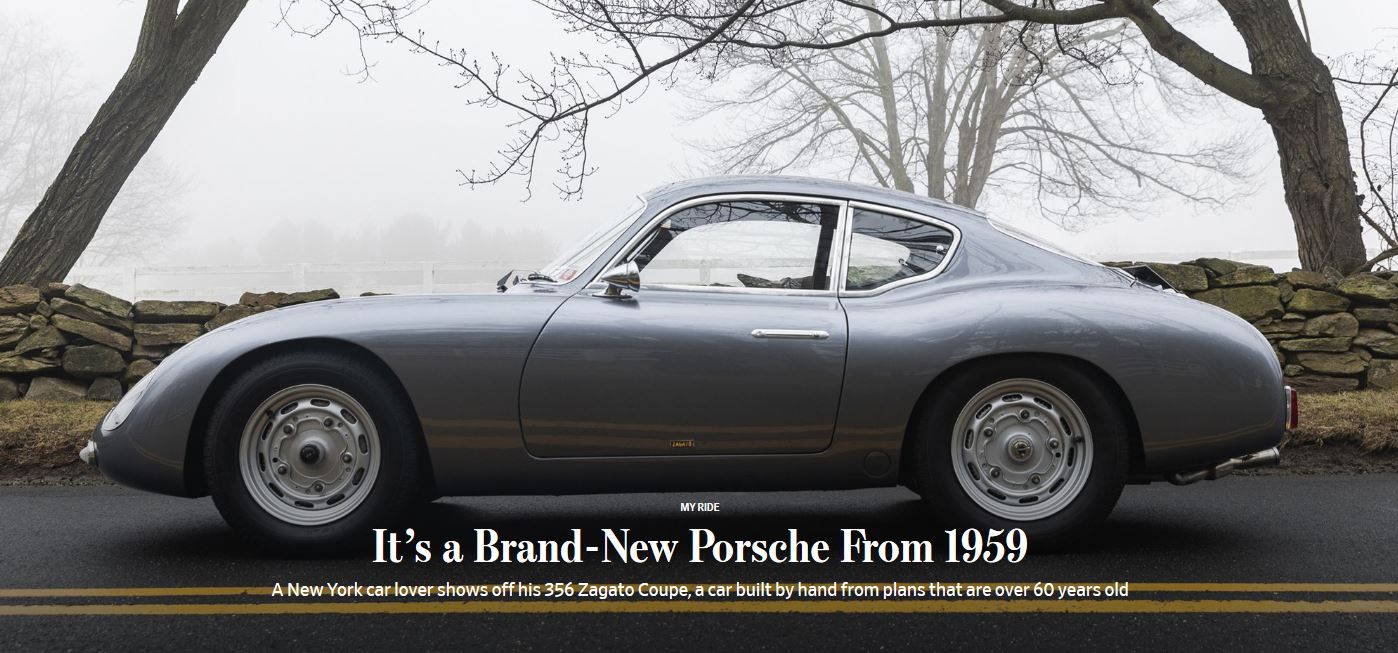
Benjamin Clymer’s Porsche 356 Zagato Coupe, photographed in Bedford, N.Y. The car is a 1959 Porsche 356 with a new body hand-hammered by the Italian firm Zagato. Sasha Maslov for The Wall Street Journal.
Benjamin Clymer of New York City, 37, founder and CEO of Hodinkee, a lifestyle and luxury watch website and e-commerce platform, on his Porsche 356 Zagato [pronounced Zah-GAT-oh] Coupe, as told to A.J. Baime.
When I was young, I was obsessed with the Volkswagen Beetle, and as I matured, a desire for speed and style crept into my psyche. My passion for the Beetle turned into a love for the Porsche 356, essentially a more interesting and faster version. (Both cars sprung from the imagination of Ferdinand Porsche and his son Ferry, decades ago.)
At the same time, around 2015, I bought my first coachbuilt car, a Lancia with a custom body made by the Italian firm Zagato. A coachbuilder is a company that builds bodies for cars in traditional ways. My Lancia, for example, has a right door that is half-an-inch shorter than the left. It was handmade. I love things that are made by artisans. Hand-wound watches, handmade glasses, shoes, suits…that is what my business is all about.
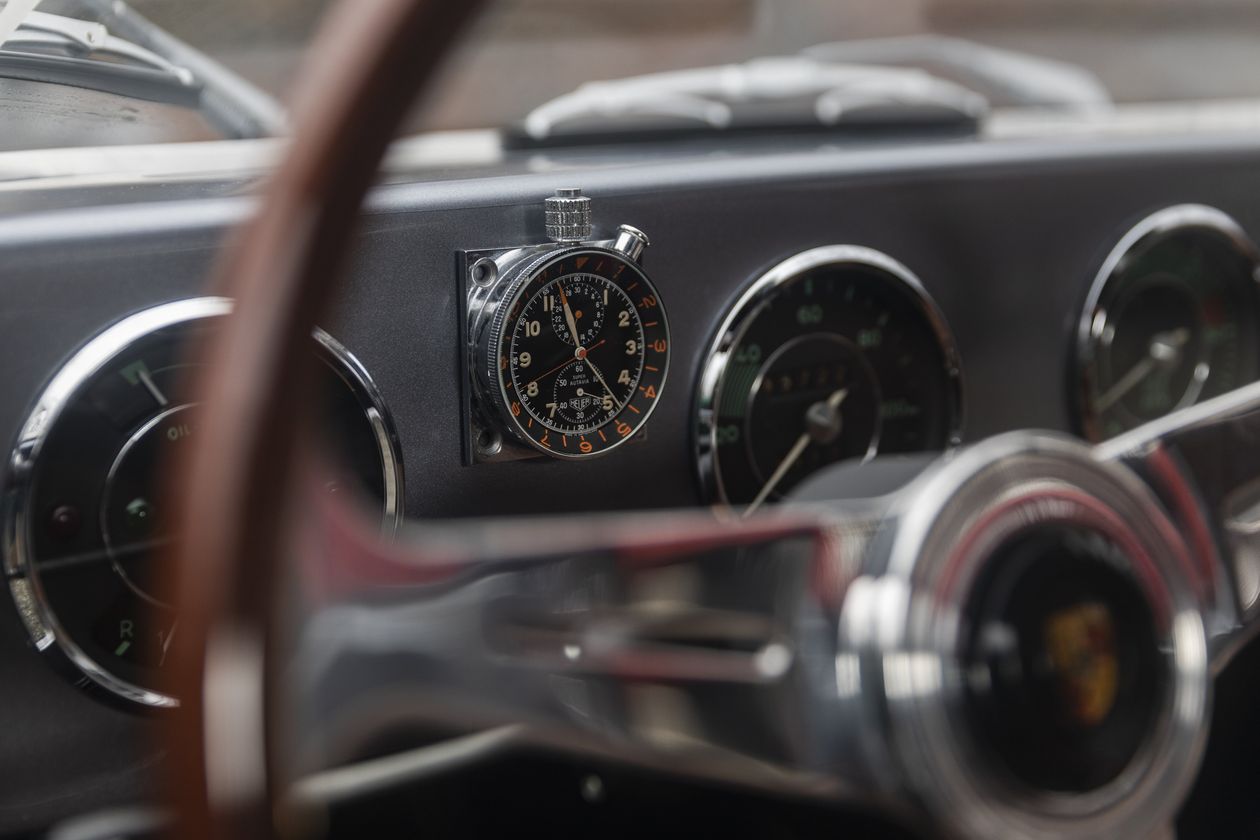
Mr. Clymer is founder and CEO of Hodinkee, a luxury watch website and e-commerce platform. He had this 1960 Heuer Super Autavia timepiece built into his car’s dashboard.Sasha Maslov for The Wall Street Journal.
Four years ago, I was at a watch show in Basel, Switzerland, and the coachbuilding firm Zagato was there exhibiting car designs. I met with them and they had this project they wanted to share with me. That is when I learned about the 356 Zagato Coupe.
The story goes that in 1958, Zagato built a lightweight, open-bodied 356 for a gentleman racer named Claude Storez. Storez crashed it and was killed, and the car then disappeared. Around 2013, Zagato found out that they had designed a coupe version of this open car, and they still had the drawings in their archives. The car had never been built. With Porsche’s blessing, Zagato set about building nine versions of this coupe, exactly as they would have done were it still the late 1950s. For a guy who cares as much about how something is built as the object itself, this was a dream come true.
It took almost three years to build this car and it cost roughly what a new Porsche 911 GT2 RS would cost. In the summer of 2019, I began putting it through its paces. I keep it in Bedford, N.Y., and when I need to escape reality, I go up there and drive. Last fall I sent the car to Los Angeles, met some friends, and drove some 1,200 miles.
This car is the culmination of all that I love. It was made the old-fashioned way, but it was made today and it was made for me.
Aston Martin DBS Customized by Daniel Craig Makes 2019 Neiman Marcus Catalog
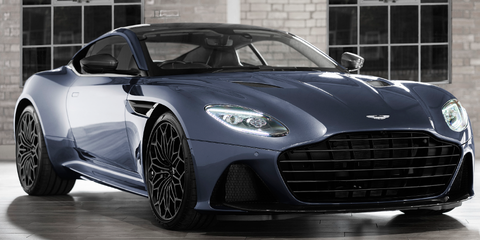
Luxury retailer Neiman Marcus’s annual Christmas Book is a holiday tradition that’s entering its 93rd year. Mixed in with the usual gift ideas this year is something we’d love to see under the tree in December: a customized Aston Martin DBS Superleggera.
The special Aston has been designed by Daniel Craig, currently the star of the blockbuster James Bond film series, and it rather fittingly carries a price of $700,007. For that frankly eye-watering price (the standard DBS Superleggera goes for $307,820), the lucky seven recipients of this fantasy gift will enjoy the car’s 715-hp twin-turbocharged 5.2-liter V-12 engine that absolutely howls when pushed hard—as we found out during our test drive in the Austrian Alps in July 2018.
Seven examples will be produced, each accompanied by a platinum Omega Seamaster Diver 300M wristwatch–itself a fantasy gift for many–as well as tickets to the world premiere of No Time to Die, the next James Bond movie. In addition to the gifts, Neiman Marcus will donate 12 percent of the sales price from each of the seven Aston Martins to The Opportunity Network through the company’s Heart of Neiman Marcus Foundation.
If Neiman Marcus’s list of gift ideas is a bit too rich for your blood, we’ve compiled our own list of automotive-related products we love that can be had for a tiny fraction of the price. They won’t be the Christmas Day knockout that Bond’s Aston Martin would be, but we think they’ll make the car lover in your life very happy.
Porsche Taycan EV Adds Cheaper 4S Variant
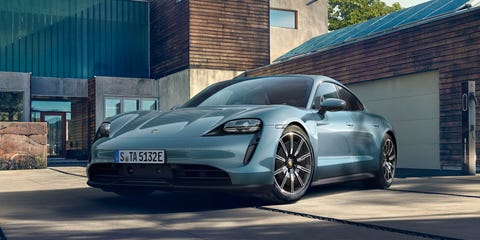
Porsche is releasing variants of its new Taycan EV from the top down, starting with the most powerful Turbo and Turbo S models and now detailing the Taycan 4S. It has less power, a lower price, and the option of a smaller battery pack that will provide less driving range.
The base Taycan 4S starts at $105,150, nearly $50,000 less than the Taycan Turbo. As such, it has a smaller, 79.2-kWh battery pack and its pair of electric motors make “only” 522 horsepower compared to the Turbo’s 670 hp and the Turbo S’s 750 hp. Porsche hasn’t released EPA range estimates for any Taycan models yet, but expect the 4S with this base battery pack to be a fair bit lower than the estimates for the Turbo and Turbo S, which we predict will range from 225 up to 270 miles on a charge.
Optional for an extra $6580 is the Performance Battery Plus that’s the same 93.4-kWh pack found in the Taycan Turbo and Turbo S. This battery should enable the Taycan 4S to provide around 260 or 270 miles of range, possibly more than the Turbo and Turbo S due to its smaller 19-inch wheels and tires. Equipped with this larger battery pack, the 4S also makes a bit of extra horsepower, up to 563 hp. Porsche says that regardless of battery, the Taycan 4S will go from zero to 60 mph in 3.7 seconds and reach a top speed of 155 miles.
Along with the smaller wheels and tires, the 4S models also have a different front fascia compared with the Turbo models. Standard features include an air suspension, keyless entry and pushbutton start, ambient interior lighting, eight-way power front seats, and dynamic LED headlights.
The Taycan 4S is available to order now, and U.S. deliveries will start in spring 2020.
By: joey Capparella, October 14, 2019
For more cars, visit: https://www.caranddriver.com/news/a29458507/porsche-taycan-4s-photos-info/
Source: https://www.caranddriver.com/
The Aston Martin DBS GT Zagato Is a Stunning Tribute to a Legend
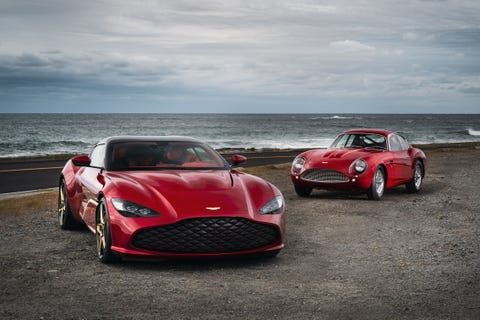
Aston Martin and Zagato have been working together off and on for nearly 60 years, producing some stunning cars in the process. None more so than the DB4 GT Zagato. The British automaker and the Italian design house decided to pay tribute, and these are our first real pictures of the final result, the DBS GT Zagato.
As first announced last year, the DBS GT Zagato will only be sold as a pair with a continuation-series DB4 GT Zagato. Just 19 pairs will be built, and the price is set at £6 million ($7.375 million, at today’s exchange rates) plus tax.
The DBS GT Zagato is based on the DBS Superleggera, but the Zagato actually makes a little more power from its 5.2-liter twin-turbo V-12—760 hp verses the Superleggera’s 715. But, it’s the bodywork that really separates the two. The DBS GT Zagato references the DB4 with its huge grille, bulging rear fenders, and double-bubble roof—a Zagato signature. There’s a lot of Vanquish Zagato in there, too.
The color, Supernova Red, is exclusive to the DBS GT Zagato, and accented by lots of gold trim, including real 18-karat gold badges. The grille is active, too, with diamond-shaped elements that can open or close as cooling requirements dictate. Inside, there’s a lot more red and gold in this car. Aston seems particularly proud of the trim, which is 3D-printed metal and carbon, an automotive first. The optional gold trim on this car is stainless steel, which apparently takes 100 hours to print.
Top Gear reported earlier this week that 18 Aston Zagato pairs had been sold, and that the 19th will likely be sold soon. We’ve reached out to Aston Martin to confirm if this is the case.
Deliveries of the DB4 GT Zagato continuation car will be completed by the end of the year, while the DBS should arrive at customer homes sometime next year.
2020 Porsche Taycan Turbo S: First Drive
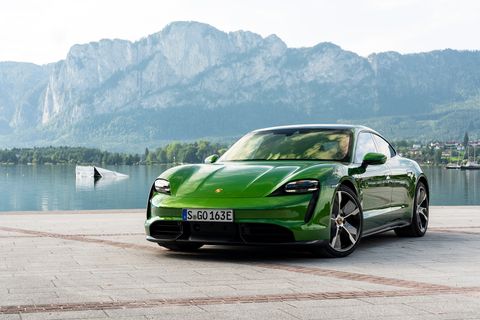
Engaging launch control in a Taycan Turbo S is simple. Call up Sport Plus mode, hold the brake with your left foot, floor the accelerator with your right. Release the brake and try to keep your neck steady. There’s no pre-heating the battery, no fussing with traction control settings, nothing.
And no histrionics. Just 750 hp and 774 lb-ft of torque turned into forward motion without a hint of wheelspin and minimal noise. There’s a good chance the loudest thing in the car will be the passengers as you rip to 60 mph quicker than a 911 Turbo S.
You probably know that this is Porsche’s first electric car, built on a brand-new platform that’ll soon underpin a high-riding wagon, the Taycan Cross Turismo, and a swoopy Audi sedan, the E-Tron GT. It’s a big deal, breaking all sorts of new ground for Porsche. It’s meant to reduce the automaker’s fleet fuel consumption and C02 emissions; it’s meant to compete with the Tesla Model S; it’s meant to start Porsche’s gradual transition away from internal-combustion. And at the end of the day, it has to live up to the Porsche name.
Our first chance to sample the Taycan came as part of a Scandinavian road trip put on by Porsche to demonstrate the new EV’s usability. The Turbo and Turbo S are all-wheel drive, with a permanent magnet synchronous motor powering each axle. (An entry-level rear-drive Taycan is likely to arrive soon.) On the top-spec Turbo S, those motors combine to make 626 horsepower in normal driving, rising to 750 for 2.5 seconds when launch control is activated. The rear motor drives a trick two-speed transmission with a low-ratio first gear. In Sport and Sport Plus modes, the car uses first gear from zero to around 50 mph for quicker acceleration. In all other modes, the car stays in second.
Tesla showed the world just how violently quick an electric car can be. The Taycan is capable of equal violence: The Turbo S hits 60 mph in 2.6 seconds, and runs the quarter-mile in 10.8.
But the Tesla takes some coaxing to get there. Ludicrous Mode will only engage after the battery reaches the right temperature—and depending on ambient conditions, that might take awhile. Back-to-back launches will run the Model S out of breath, acceleration waning as battery temps rise. The Taycan can hit its marks over and over, no warm-up or cool-down required. A lot of work went into that. The Porsche’s 800-volt architecture runs lower current, allowing engineers to use smaller-gauge wiring, reducing temperatures.
Porsche has never been solely about straight-line performance. The Taycan is shorter in length than a Panamera, but a smidge wider. Thanks to its 93.4-kWh battery pack, the new EV is a heavy machine, the Turbo S weighing in at 5121 lbs according to Porsche. Thankfully, like most EVs, the Taycan carries its weight low in the chassis, affording a center of gravity that’s lower than a 911’s. In Turbo S trim, you get three-chamber air springs, adaptive dampers, rear-wheel steering, and optional active anti-roll bars driven by a separate 48-volt electrical system. The Turbo S rides on 21-inch wheels (non-S Turbos get narrower 20s). Our tester wore Goodyear Eagle F1 Asymmetrics measuring 265/35 up front, 305/30 in the rear.
The roads between Oslo and Gothenburg alternate between tight and flowing. On both varieties, the Taycan hides its size and weight, the active anti-roll bars contributing to real agility and freakishly good body control. The damping controls body motion well, and the steering is reassuringly hefty and precise, weighting up naturally as load increases at the front. The steering wheel doesn’t wriggle away like an old 911’s, but no electric-power-assist setup in Porsche’s current lineup does.
Unfortunately, the brake pedal doesn’t quite match the steering. In normal driving, the Taycan accomplishes most of its braking through regeneration. Around town, or in any situation that demands small brake modulations, the pedal tends to feel spongy, a bit unnatural. Once you’re moving, though, there’s nice bite at the top of the pedal and a more predictable feel.
Different EV manufacturers approach regenerative braking differently. Many pure EVs control regen through the accelerator pedal—the more you lift, the more the car slows. Porsche engineers thought this wasn’t quite intuitive, especially in fast driving, so the Taycan only engages a small amount of regen on throttle lift, which can be switched off entirely via a steering wheel button. There’s also an automatic regen mode, where a camera analyzes the road ahead to adjust the amount of regen available.
The Taycan also has massive conventional brakes. The Turbo S comes standard with carbon-ceramic rotors, 16.5 inches up front, 16.1 inches rear, gripped by 10-piston and four-piston calipers, respectively. (The setup is optional on the non-S Taycan Turbo, which comes standard with steel brake rotors measuring 16.4 inches up front and 14.4 inches at the rear, with the same caliper setup.) On the Turbo S I drove, the transition between regen and friction braking was totally seamless.
We could talk about the more extreme dynamic capabilities of the Taycan all day—and hopefully, we’ll have more time in the car to explore those further. Ultimately, this car is a daily-driver, and real-world livability is the most relevant factor.
Things are off to a great start with an excellent driving position—a little higher a 911’s, thanks to those batteries crammed into the floor, but familiar. The tall front fenders help you precisely place the nose of the car, and like all Porsche sports cars, the short hood tumbles away from your view. The scene through the windshield is charmingly reminiscent of a 918 Spyder’s.
By: Chris Perkins, September 24, 2019
For more cars, visit: https://www.roadandtrack.com/new-cars/first-drives/a29198183/2020-porsche-taycan-turbo-s-first-drive-review/
Source: https://www.roadandtrack.com/
Glickenhaus Will Race this SCG007 at Le Mans in 2021
Le Mans 2021 has just got even more interesting. We’ve already heard Aston Martin and Toyota say they’ll compete in the WEC’s new top-tier ‘hypercar’ class, and now Scuderia Cameron Glickenhaus has thrown its hat in the ring too.
Revealed today on Twitter, SCG says it’ll field a pair of SCG007s in the WEC, but also offer the car to privateer teams and build a “limited run of road-legal examples”. Power supposedly comes from a 3.0-litre twin-turbocharged V6 of so-far unspecified origin.
SCG, in case you need reminding, is the brainchild of Jim Glickenhaus – friend of Top Gear, collector of many interesting Ferraris (including the Modulo, which we’ve driven) and now, builder of his own hypercars and boss of the team that races them, and bears his name.
He’s the brain behind the P4/5 of 2006, which fed into the SCG003 – a ground-up racer using all the development knowledge from Jim’s previous years competing at the ‘Ring. In 2015’s Nurburgring 24 Hours it qualified on pole and finished first in its class. We’ve driven the roadgoing version – read about it by clicking on these blue words.
We can’t wait to see this thing race in 2021.
By: Tom Harrison, September 19, 2019
For more cars, visit: https://www.topgear.com/car-news/motorsport/glickenhaus-will-race-scg007-le-mans-2021
Source: https://www.topgear.com/
Porsche Cracks Open Nostalgic Coke Livery for 911 RSR’s Final Race
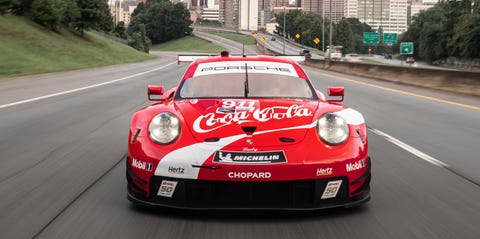
Two Porsche 911 RSRs will contest the 22nd Motul Petit Le Mans 10-hour race in October at Road Atlanta, both wearing classic red and white Coca-Cola livery. The Coke look will be right at home in Atlanta, headquarters of both Porsche Cars North America and of the soda-pop brand, and it also celebrates the Bob Akin team, which competed in the 1980s—and won the 12 Hours of Sebring in 1986—in a similar paint scheme. The Coke look (and the car) was so popular that a restored Akin 1987 Porsche 962 sold on the Bring a Trailer auction site for $960,000 in August.
Petit Le Mans will be the final outing for this version of the 911 RSR before a next-generation race car makes its debut, according to Porsche. At Road Atlanta, No. 911 will be driven by Patrick Pilet, Nick Tandy, and Frédéric Makowiecki. The other car, wearing No. 912, will be piloted by current GTLM points leader Earl Bamber, Laurens Vanthoor, and Mathieu Jaminet. Qualifying begins on the afternoon of Saturday, October 10, and the 10-hour IMSA WeatherTech Championship finale starts on Saturday, October 12, at 11:55 a.m. ET.
In the video below, as the No. 911 RSR pulls in for a quick drink, each body panel is replaced with one from the new livery before making its way through the city to Road Atlanta.
The Vision EQS Is the LED-Heavy Future of Mercedes-Benz Sedans
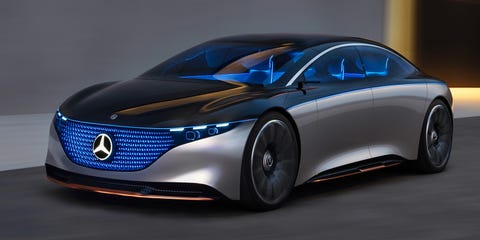
If you’ve ever looked an an E-Class and thought, “Wow, this could really use more lights,” Mercedes-Benz has you covered. Its newest concept, the Vision EQS, just premiered in Frankfurt today, and it uses more LEDs than we can keep track of.
Mercedes pitches the all-electric EQS as an “outlook on a new dimension in sustainable luxury.” The front grille alone houses 188 individual LED lights, designed to create a three-dimensional effect when turned on. The headlights are equipped with what Mercedes calls “Digital Light” technology, which incorporates two holographic lens modules into each assembly. Combined, the grille and headlights make for a flowing fascia that leads seamlessly through the rest of the exterior.





